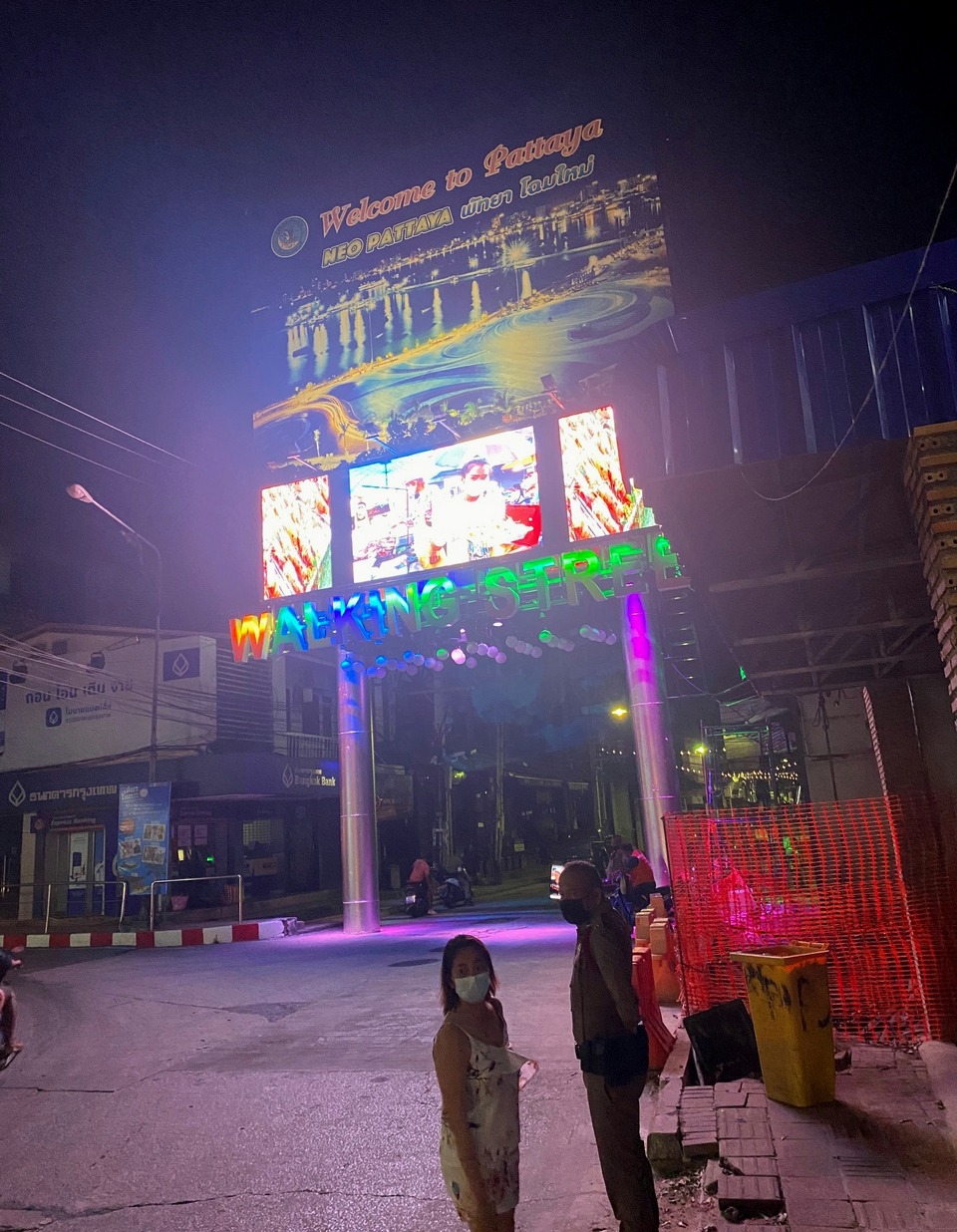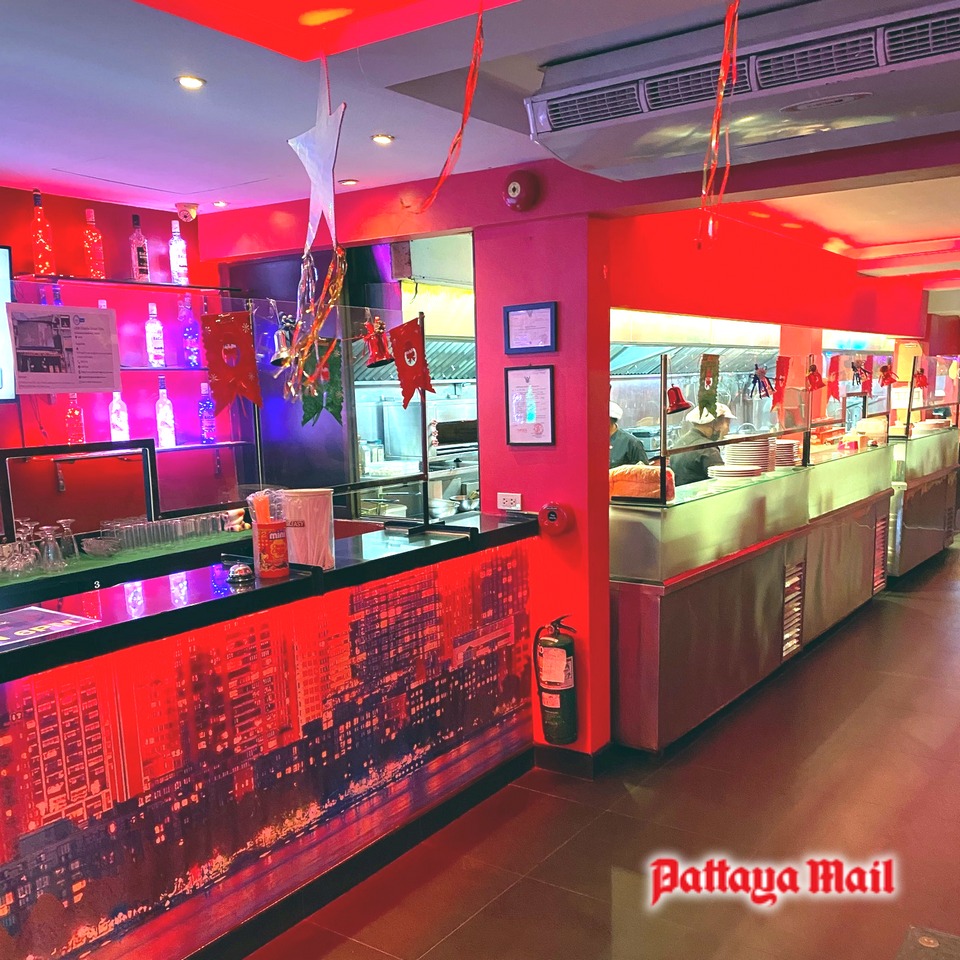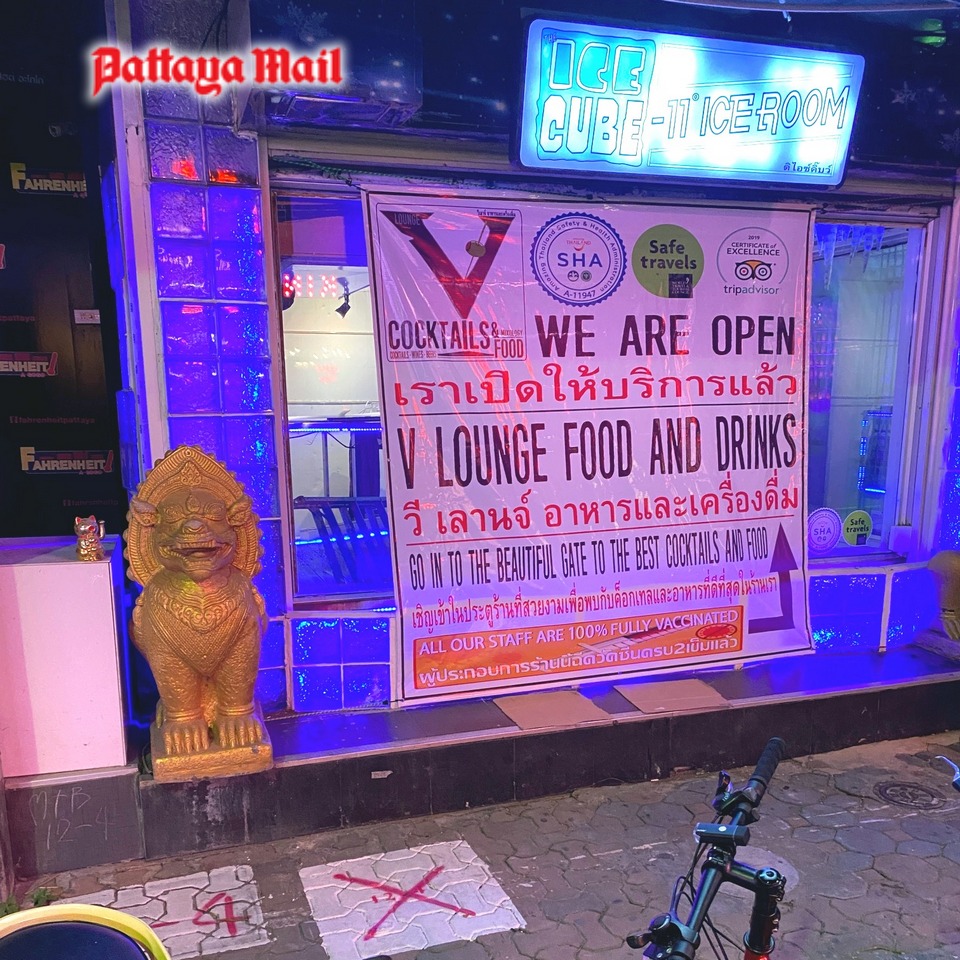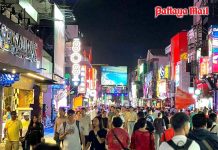
Both pilloried and praised for 40 years, Pattaya’s most famous street is sputtering into life after being left for dead. Many buildings remain in darkness or disrepair, but about 10 commercial enterprises have already opened up in earnest in recent days. They include the New York Diner, a lavishly renovated eatery and extensive bar area which stretches from the cobbled street to the sea, an area of about 200 yards. The multi-page menu carries the logo of the former Insomnia nightclub. It’s popular with Thais and the as-yet small number of foreign tourists in town.
There is also a large Muzzick cafe, with singers and a band, and several other landmarks including a renovated King Seafood: none are go-go joints or lewd cabarets and there’s absolutely no sign of those Ukrainian ladies moving suggestively in an upstairs window. All the establishments offer substantial menus and are licensed by the Safety and Health Authority whose certificates legalize the sale of alcohol. Several Pattaya city policemen with motorbikes sit quietly in the shadows, although there is no sign of the tourist police and their foreign volunteers, made famous long ago by the TV series Big Trouble in Thailand.

But there’s more. There are three or four open-to-the-street bars offering beers and spirits without any food on the tables or any suggestion of a menu. However, we were assured by Khun Oy, a manager, that all was in order. “We have applied for the SHA documentation,” he said, “but we are really a pilot scheme getting ready for the massive reopening of Walking Street later this month.” He said that Pattaya would boom in late December for the countdown to new year and permission had already been granted to serve booze on New Year’s Eve until 1 am.
The motorbike taxi boys have returned too. With 25 years of experience ferrying inebriated customers back home on two wheels, Khun Mack claimed that a new Walking Street was in formation. “The whole area is going to be dominated by huge complexes offering entertainment, but the sleaze element won’t be obvious. In the past, the street was a bubble where things went on behind closed doors which were frowned on elsewhere. The whole enterprise is going upmarket, or will do once Covid subsides.”

A spokesperson for the Pattaya Business and Tourism Association said it was true that the present legal situation on the sale of alcohol was still open to interpretation, but his group and others were lobbying hard to reduce the restrictions. Pattaya police, meanwhile, are sticking to the line that only “restaurants” may serve alcohol, although the definition remains controversial even amongst language professors. The flexibility may in turn reflect the low daily Covid infections currently being reported nationally. At the moment, that is.
Pattaya Walking Street began in the 1960s as a rest and recreation haunt for American service personnel. It has undergone many changes and, prior to the Covid pandemic, had already lost its wilder elements and pornographic shows. Many had assumed that the Asian foreign investors in the Eastern Economic Corridor (which includes Pattaya) were planning to knock down the entire street and establish a family-orientated leisure and business district. That is still on the cards. But the Walking Street certainly knows how to put up a fight for survival.
 |
 |
 |





